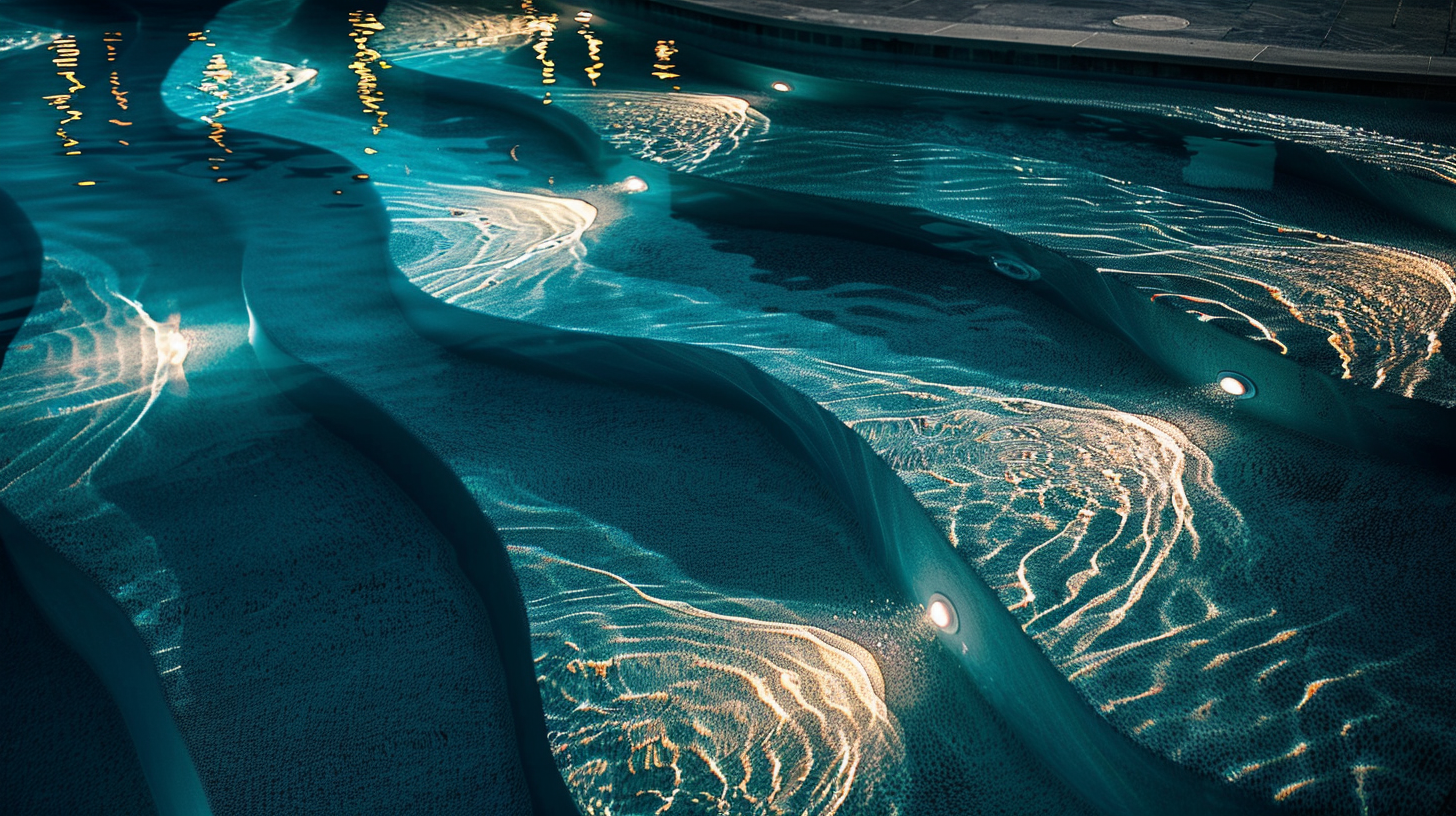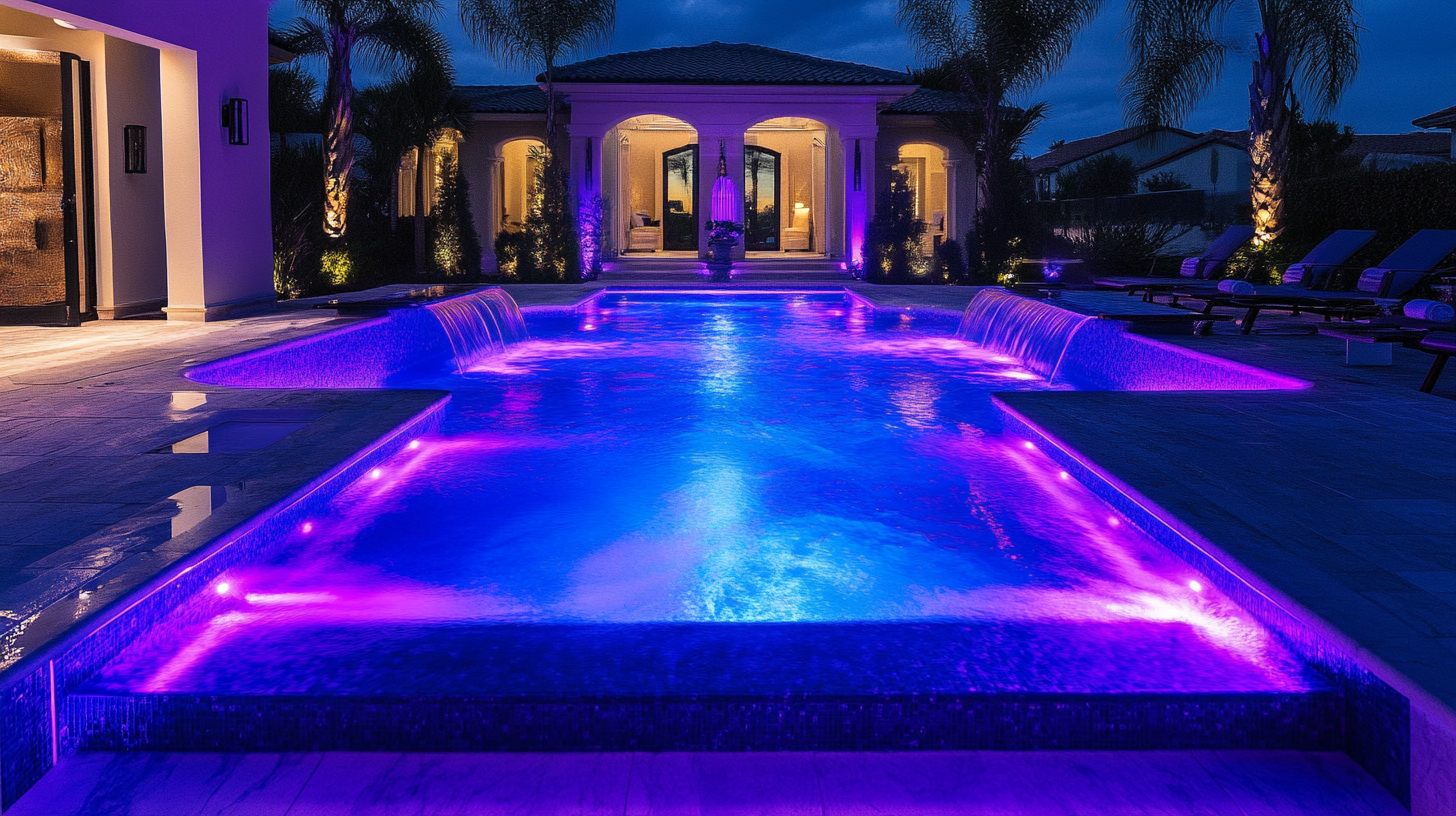The impact of underwater lights on marine life
Underwater lighting technology has evolved significantly over the past few decades, transforming from rudimentary setups to sophisticated systems that are now a common sight in various marine applications. Initially, underwater lights were primarily used in maritime contexts, such as on fishing vessels and yachts, to improve visibility and enhance safety. Today, they serve a myriad of purposes, from recreational night diving to scientific research, and even aesthetic enhancements in aquariums and public exhibitions.
One of the most significant technological advancements in underwater lighting is the advent of LED lights. LEDs have largely replaced traditional halogen bulbs due to their energy efficiency, durability, and longer lifespan. These modern lights are capable of emitting a broad spectrum of colors, which can be adjusted to create different atmospheres or meet specific needs. This versatility makes them a popular choice not only for scientific exploration but also for enhancing the visual appeal of luxury boats and underwater structures.
Another important development is the integration of underwater lights with smart technology. Many systems now come with remote-controlled features and can be connected to smartphones or other devices, allowing users to adjust brightness, color, and even flashing patterns with ease. This level of control has made these lights particularly popular in the boating community, where they are used to create captivating light shows that can transform an evening on the water into a memorable experience.
Despite the many benefits, the growing prevalence of underwater lights has sparked concerns regarding their environmental impact. Marine life is highly sensitive to changes in light patterns, and the use of artificial lighting in aquatic environments can disrupt natural behaviors and ecosystems. Understanding the balance between utilizing this technology and preserving the marine environment is crucial.
As the technology continues to progress, ongoing research aims to mitigate any negative impacts while enhancing the benefits. It is essential to consider the delicate balance of our oceans, ensuring that modern conveniences do not come at the expense of the rich biodiversity and intricate ecosystems beneath the waves.
Behavioral changes in marine organisms
Marine organisms rely heavily on natural light cycles for a variety of behaviors, from feeding and mating to migration. The introduction of artificial underwater lights has been observed to disrupt these natural routines, leading to significant behavioral shifts. For instance, nocturnal species that depend on darkness to hunt or avoid predators may find their environment unnaturally illuminated, causing them to shy away from areas where these lights are prevalent. This alteration in predator-prey dynamics can lead to unintended consequences, such as changes in population sizes and the disruption of food webs.
Fish, crustaceans, and even plankton display a range of responses to underwater lights. Some species of fish are attracted to the lights, which can cluster them around docks, boats, or other lit structures. While this might seem beneficial for those looking to observe marine life or for recreational fishing, it can lead to increased predation, stress, and competition among congregated species. The clustering effect can make fish more vulnerable to overfishing and can also interfere with their reproductive cycles, as behaviors related to spawning might be hindered by the continual presence of artificial light.
In contrast, some marine organisms display avoidance behaviors in the presence of underwater lights. Seahorses, for instance, have been documented to shy away from illuminated areas, potentially restricting their territorial range and access to essential resources. Similarly, numerous species of crustaceans, such as crabs and shrimps, which typically emerge from their hiding spots to forage under the cover of night, may alter their activity patterns or refrain from foraging altogether due to artificial lighting, impacting their growth and survival.
The effects extend even to the smallest inhabitants of the ocean, such as plankton. Plankton undergo a daily vertical migration, rising to the surface waters at night to feed and descending during the day to avoid predators. Ahis behavior ensures the transfer of carbon and energy from the surface to deeper ocean layers. The constant presence of underwater lights can disrupt this migration rhythm, causing plankton to remain at certain depths longer than usual, which can have cascading effects on the larger marine ecosystem.
Observing these behavioral changes provides critical insights into how underwater lights impact marine life and ecosystems. While the technology behind these lights enhances human experiences, such as night diving and evening boat outings, it is imperative to develop approaches that minimize their environmental impact. Future advancements should aim at harmonizing our enjoyment and use of marine environments with the inherent needs and rhythms of the marine organisms that dwell within them.
Effects on marine ecosystems
The environmental impact of underwater lights extends beyond individual species and touches entire marine ecosystems, creating a complex web of interactions and consequences. One of the primary concerns is the disruption of the natural balance in marine habitats, which can have far-reaching effects on overall ecosystem health. Artificial lighting can alter the delicate interplay between predators and prey, leading to shifts in population dynamics that can ripple through the food chain.
For example, coral reefs, which are among the most biodiverse ecosystems on the planet, can be particularly sensitive to changes in light conditions. Many coral species rely on specific light cues for spawning and symbiotic relationships with light-sensitive algae known as zooxanthellae. Disruptions in these light patterns due to underwater lights can affect coral reproduction and hinder the photosynthetic processes of these algae, ultimately impacting coral growth and health. Given that coral reefs support thousands of marine species, any negative effects on corals can cascade to the broader reef community, affecting fish populations and other marine organisms that rely on these environments for food and shelter.
Seagrass meadows also face challenges. These underwater plants rely on natural light cycles for photosynthesis. Artificial lighting can interfere with these processes, slowing down growth and reducing the amount of habitat available for a variety of marine life, including fish and invertebrates that depend on seagrass for shelter and food. Moreover, seagrass beds play a crucial role in carbon sequestration and the stabilization of coastal sediments, underscoring their importance for both marine ecosystems and the mitigation of climate change.
The impact is not limited to stationary ecosystems like reefs and meadows. Mobile species, such as migratory fish and turtles, can also suffer. Many marine animals, including some species of fish and sea turtles, use the moon and stars for navigation. Artificial lights from boats, piers, and underwater structures can disorient these species, leading them astray during their crucial migratory journeys. For instance, hatchling turtles naturally head towards the ocean by following the light of the moon reflecting off the water. Artificial lights can confuse them, causing them to head in the wrong direction and increasing their vulnerability to predators and human threats.
Even the microbial life at the base of the food web is not immune to the effects of underwater lights. Changes in light conditions can influence the behavior and distribution of these microorganisms, potentially altering nutrient cycles and energy flows in marine environments. The disruption of these foundational processes can have broad implications for the health and productivity of the entire ecosystem.
As the use of underwater lights expands, it is essential to consider these myriad effects on marine ecosystems. While the benefits of enhanced visibility and recreational boating experiences are clear, the potential environmental costs necessitate thoughtful mitigation strategies. Ongoing research is crucial to fully understand these impacts and develop solutions that balance human enjoyment of marine environments with the well-being of the ecosystems we are privileged to explore.
Mitigation strategies
Addressing the environmental impact of underwater lights requires a multifaceted approach that integrates technological innovation, regulatory measures, and community engagement. One effective strategy is to implement design modifications that reduce light pollution. For instance, utilizing shields and directional lighting can minimize the spread of artificial light into surrounding waters and focus illumination only where it is needed. Such measures not only help conserve energy but also reduce the disturbance caused to marine life.
Regulations and guidelines play a crucial role in mitigating the effects of underwater lights on marine ecosystems. Authorities can establish lighting standards for various marine activities, setting limits on the intensity, spectrum, and duration of artificial lighting. For example, setting specific guidelines for light intensity and wavelength during critical periods, such as fish spawning seasons or turtle hatching events, can significantly reduce the negative impact on vulnerable species. Compliance with these regulations can be enforced through monitoring programs and the issuance of permits.
Technological advancements can also pave the way for more environmentally friendly underwater lighting solutions. The development of eco-friendly lighting technologies, such as bioluminescent lights or dynamic lighting systems that mimic natural light patterns, offers promising avenues for reducing the ecological footprint of underwater illumination. Research into LED designs that minimize blue light emissions, which are particularly disruptive to marine organisms, could further lessen the environmental impact.
Community involvement and awareness are critical to the success of these mitigation efforts. Public education campaigns can inform boaters, divers, and other ocean-goers about the potential effects of underwater lights on marine ecosystems and encourage responsible practices. Simple actions, such as turning off unnecessary lights when not in use or dimming lights during sensitive periods, can collectively make a significant difference. Collaborations between environmental organizations, scientists, and the boating community can foster a culture of stewardship that prioritizes the health of marine ecosystems.
| Mitigation Strategy | Description | Benefits |
|---|---|---|
| Directional Lighting | Uses shields and focused lights to limit the spread of illumination. | Reduces light pollution, conserves energy, minimizes disturbance to marine life. |
| Regulatory Guidelines | Establishes standards for light intensity, spectrum, and usage periods. | Protects vulnerable species during critical periods, ensures compliance through monitoring. |
| Eco-friendly Technology | Develops bioluminescent or dynamic lighting that mimics natural patterns. | Decreases ecological footprint, reduces blue light emissions harmful to marine organisms. |
| Community Engagement | Educates the public about responsible lighting practices. | Fosters a culture of environmental stewardship, encourages simple yet impactful actions. |
The integration of these strategies can yield a balanced approach that allows for the continued use and enjoyment of underwater lights while safeguarding marine life and ecosystems. As we advance in our understanding of the complex interactions between artificial lighting and the ocean’s inhabitants, ongoing research and adaptive management will be essential in refining these mitigation techniques and ensuring their effectiveness.
Future research directions
Looking forward, the study of underwater lights and their influence on marine life is poised to become even more critical. One promising direction for research involves a deeper examination of species-specific responses to artificial lighting. Understanding how different marine organisms react to various wavelengths and intensities of light can help in designing lighting systems that minimize disruption. Such detailed knowledge will enable the customization of underwater lights to be less intrusive for certain species, reducing the overall environmental impact while still providing the benefits humans seek from these technologies.
Moreover, researchers are increasingly focusing on the long-term ecological effects of underwater lights. While short-term behavioral changes have been documented, there is a need to understand how continuous exposure over months or years affects the health and population dynamics of marine species. Longitudinal studies could reveal cumulative effects that are not immediately apparent, emphasizing the importance of sustainable lighting practices.
Another exciting area of research is the potential development of advanced lighting technologies that mimic natural light cycles. These dynamic lighting systems could adapt in real-time, adjusting their color and intensity to simulate natural sunrise, sunset, and moonlight conditions. This approach aims to provide necessary illumination for human activities, like boating and underwater exploration, while aligning more closely with the circadian rhythms of marine life. The technology could greatly reduce the environmental impact of artificial lighting on marine ecosystems.
Collaborative efforts are also essential. Cross-disciplinary research involving biologists, oceanographers, engineers, and environmental scientists can yield comprehensive insights into the complexities of light pollution in marine environments. Such collaborations can lead to the development of innovative solutions that are both technologically advanced and ecologically responsible. For instance, experimental setups in controlled environments could simulate various lighting scenarios and measure the impacts on a variety of marine organisms, providing a valuable database for future technological advancements.
In addition to scientific research, there is a growing recognition of the importance of traditional and local knowledge in understanding the impacts of underwater lights. Indigenous communities and local fishers, who have observed marine environments for generations, can offer invaluable insights. Integrating this traditional knowledge with modern scientific approaches can lead to more holistic and effective mitigation strategies.
Policy-oriented research is also crucial. Understanding the socio-economic factors that influence the use of underwater lights can guide the development of regulations that are both effective and practical. Studies on compliance behavior, economic incentives, and the impact of regulations on local communities can inform policies that balance environmental protection with economic viability.
Finally, public engagement and education remain key components. As new research findings emerge, efforts to disseminate this knowledge to the broader public will be vital. Engaging with the boating community, divers, and coastal residents through workshops, informational campaigns, and participatory research projects can foster a greater sense of stewardship and responsibility towards marine environments.
Future research directions are vast and varied, encompassing species-specific studies, long-term ecological impacts, technological innovation, cross-disciplinary collaborations, integration of traditional knowledge, policy research, and public engagement. As we continue to explore the depths of our oceans with the aid of underwater lights, it is imperative that we do so with a commitment to safeguarding the marine life and ecosystems that make our planet so remarkable.


